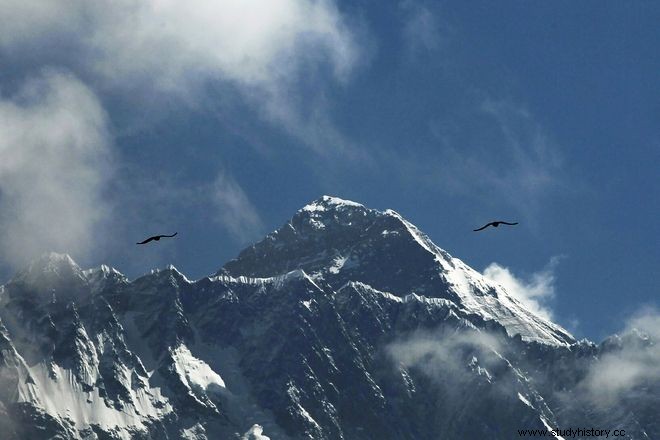At this year's Olympic Games we are going to watch, among other sports, the sport of climbing.
Participants will test their speed skills in bouldering, where they must complete as many routes as possible within 4 minutes, and they will also be tested on how high they can reach within 6 minutes.
And while climbing is a new sport for the Olympics, alpinism has its own interesting history. Starting from the beginning of the 20th century, the macabre information that those who had excelled in the sport, were recognized for their achievements and awarded medals after their death, is confirmed by the above.
The Olympic Games recognized the sport of mountaineering as an official activity in 1894, although it took another 30 years to award the first medal.
The history of the sport
The first medal for the sport of mountaineering was awarded on February 5, 1924, at the first Winter Olympics in France. The International Olympic Committee awarded medals to the 13 members of the 1922 Everest Expedition. The expedition consisted of 12 Britons and one Australian, and the route was led by General Charles Granville Bruce and Lieutenant Edward Strutt, along with the famous mountaineer George Mallory.
It was the first time there had been a determined and focused effort to reach the top, and this ambition received particular global attention. The mission was nevertheless extremely dangerous, as an avalanche hit the team.

Medals were later awarded to the seven "Sherpas" from India, according to Mentalfloss, who died during the expedition as a result of the disaster. In fact, an eighth medal was awarded to a Nepalese soldier, Tejbir Bura, who was also lost during his attempt.
The "Sherpas" had the most difficult task. They carried heavy equipment and fixed ropes for climbers, ensuring that every climber was safe at the same time. Team member Dr. Arthur Wakefield wrote in a letter to his wife:"When I looked behind me, the whole wall was white and there was no lane for the ascending climbers".
The names of the Sherpas that went down in history:
Antarge Sherpa
Lhakpa Sherpa
Narbu Sherpa
Pasang Sherpa
Pembra Sherpa
Sange Sherpa
Temba Sherpa
What is remarkable about this story is the fact that it was the first and last time a medal was awarded to a multinational team , as the Olympic Games award medals per country. In his statement, the then President of the International Olympic Committee, Pierre de Coubertin, emphasized that the medals were awarded because the participants had shown "absolute heroism on behalf of all the nations of the world".
Lieutenant Strutt was on hand to collect the medals on behalf of his team and vowed to reach the summit of Everest with one in hand. However, this wish of his remained unfulfilled as the first two people to reach the top of Everest were Tenzing Norgay (known as Sherpa Tenzing) and Edmund Hillary in 1953.
The famous mountaineer, George Mallory, shortly after Lieutenant Strutt received the medal, disappeared during his expedition to the summit of Everest in 1924.
His body was not found until 1999.
Other medals awarded to climbers who are still alive followed, such as brothers Franz and Tony Schmidt in the 1932 Los Angeles Games and Gunter and Hettie Dyhrenfurth for a 1934 Himalayan expedition that was recognized during the Games of 1936 in Berlin.
The Second World War interrupted the Olympics and mountaineering ceased to be part of the Olympics in 1946 - but that was not the end of the Games, nor of course mountaineering. In 1987, Reinhold Messner and Jerzy Kukuczka were awarded silver medals for climbing 14 8000m peaks in the world, although Messner declined the award.
In 2012, mountaineer Kenton Cool - who had climbed Mount Everest nine times - received an Olympic gold medal for reaching the summit of the mountain, in Strutt's honour.
PS The sport of competition climbing was officially established by the U.I.A.A. in April 1988, it became an Olympic sport in 2016 and will be included in the upcoming Tokyo Olympics (2020).
Follow News247.gr on Google News and be the first to know all the news
